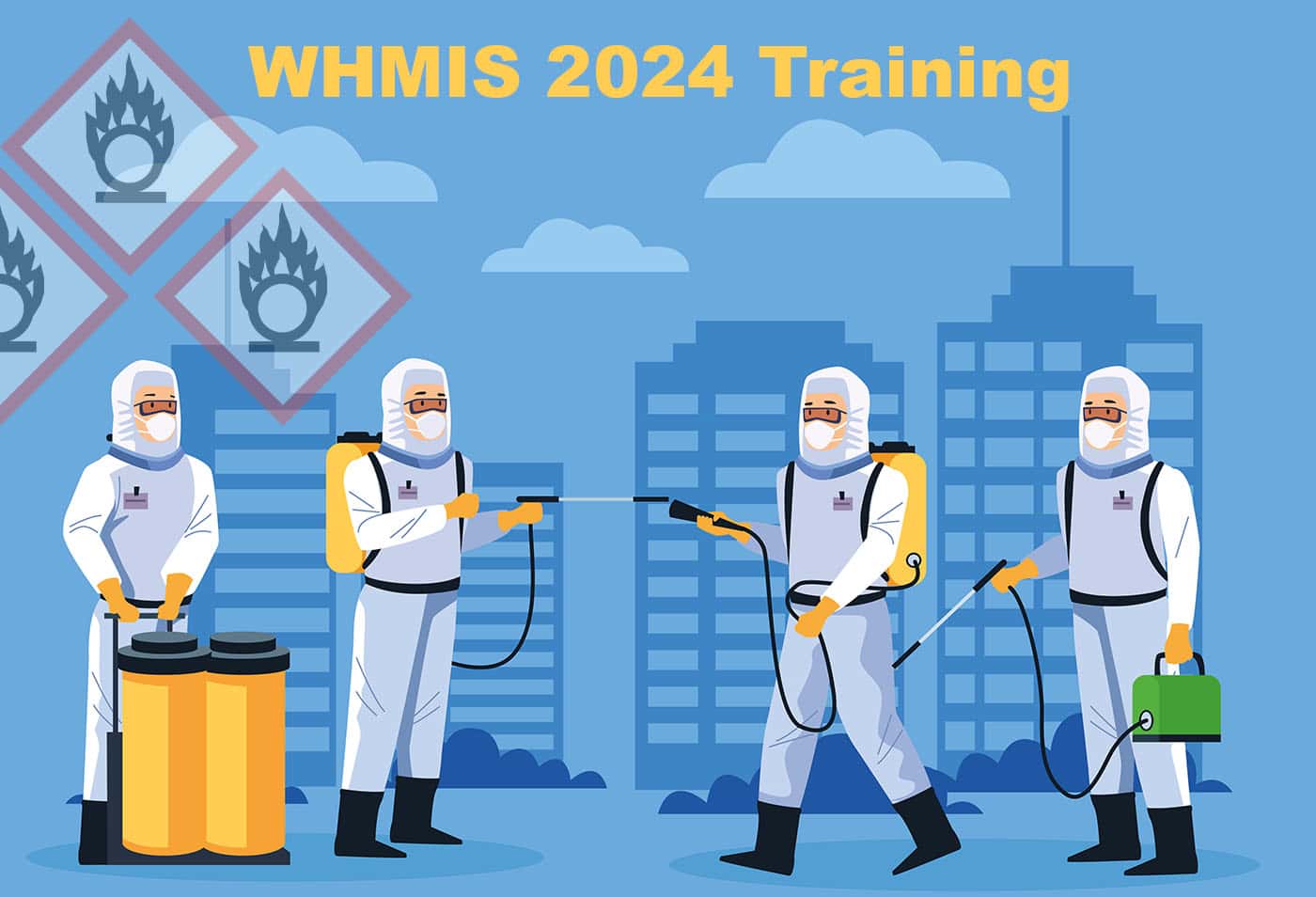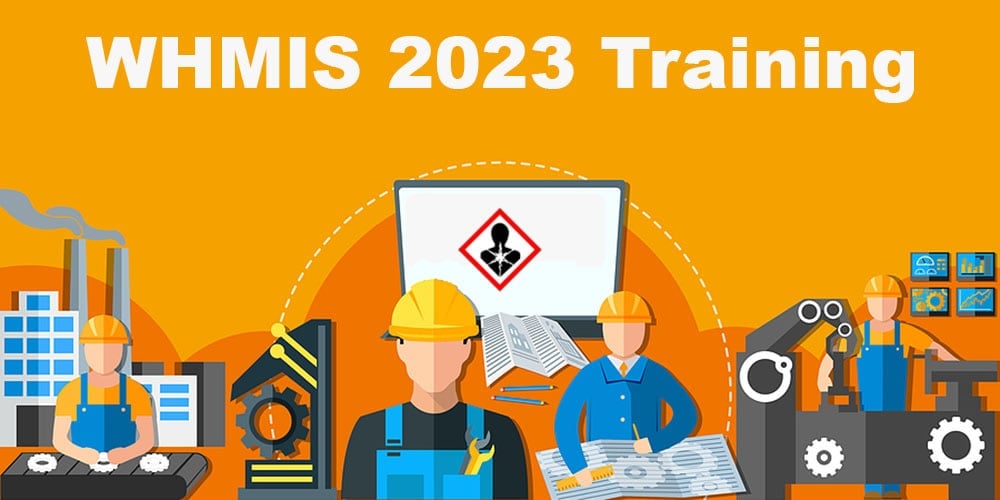Preparing for WHMIS Certification: 10 WHMIS Practice Test Questions You Need to Know
Are you ready to pass your WHMIS test? Without the right knowledge and training, getting your certificate may be harder than you think! Prior to completing your training, you can take a WHMIS practice test to improve your knowledge. These tests ensure you truly understand the material. Plus, you can keep practicing them until you score an A.
Ready to test your knowledge? Here are some questions that can act as a study guide.
1. What Are the Hazard Classes?
WHMIS divides hazardous products into over 20 classes. They include oxidizing gases, flammable liquids, organic peroxides, and many more. Each class is further divided into categories.
Category one would be the most hazardous material in the class. Category two would still be hazardous, but less so than category one. Subsequent numbers decrease in hazard level.
For example, one of the classes is “flammable” which contains gases, aerosols, liquids, and solids. When these classes are in categories one, two, or three, they’ll have a pictogram of a flame.
But, it’s important to know that not all classes and categories require a pictogram. They can still be a hazardous material without the symbol on the label.
For your WHMIS practice test, you should be able to identify what the class and category are from the label.
2. Which of the Following Are Health Hazards?
There’s a difference between health hazards and physical hazards. Health hazards apply to materials that can cause a negative effect on your health. For example, eye irritation, skin rash, carcinogens, etc.
Physical hazards apply to the chemical properties of the product. For example, flammability or reactivity.
On your test, you should be able to note which products or symbols are health or physical hazards. For example, you could have a multiple choice question on the WHMIS practice test.
Out of the options, you have to decide which are health hazards. The options could include explosive, carcinogenicity, aspiration difficulty, and flammable. Of these choices, carcinogenicity and aspiration difficulty are health hazards.
3. When Are Workplace Labels Required?
Almost every hazardous product in the workplace needs a label. This ensures all employees stay safe and healthy. Labels make you aware of the contents, hazards, and instructions.
There are some situations that make it confusing to know if you need a label, like when the products get shipped without their original containers. These products still need a proper label.
You also need a label if the original has come off or isn’t readable or if the product gets produced in your workplace. In that case, it’s your job as the manufacturer to create a label.
4. What Is the Safety Data Sheet?
The Safety Data Sheet (SDS) provides much more detail about a product than the label does. It might list chemical interactions to avoid, potential hazards, and specific instructions for handling and use.
Workplaces that adhere to WHMIS standards must have safety data sheets for every hazardous product that’s present in the workplace. These protect workers from using the product incorrectly and getting injured or sick.
For your WHMIS practice test, you should be able to define what the SDS is. And, explain its different components.
5. How Do You Dispose of a Corrosive Material?
The WHMIS practice test could ask you how to dispose of corrosive materials. Do you know the answer?
You must never pour corrosive materials down the sink.
Follow the manufacturer’s instructions on how to dispose of the product. They’ll list this on the Safety Data Sheet. Often, you’ll need to wear protective gear when handling any corrosive materials.
6. What Do the Diamond, Triangle, and Circle Borders Mean?
If you look at any chemical substance in the workplace, you’ll see one of three symbol borders. A diamond, triangle, or a circle. Then, there’s an additional symbol placed inside one of those borders.
The red diamond border means the substance has potential hazards. An upside-down triangle means the container and its contents are dangerous.
The circle border is for biohazardous symbols. This shows that the contents can cause disease or sickness. You should also study what each of the 10 inner symbols represents for your WHMIS practice test.
7. What Symbols Must You Know for the WHMIS Practice Test?
There are ten pictograms / symbols that tell you the type of hazard a product belongs in.
One of the pictograms is the skull and crossbones. It represents acute toxicity. This means that the substance is poisonous and shouldn’t get touched, inhaled, or ingested.
The other nine pictograms / symbols you need to know are:
- Exploding bomb
- Flame
- Flame over a circle
- Gas cylinder
- Corrosion
- Health Hazard
- Exclamation Point
- Hazards to the Environment
- Biohazard
You’ll likely be familiar with a handful of these symbols if you work with them in your job. Ensure you can recognize them and identify their purpose for the WHMIS practice test.
8. What Does the Accidental Release Measures Section in the SDS Contain?
The SDS has 16 sections that must all have current and accurate information. One of these sections is the Accidental Release Measures.
This section tells you what to do if a substance spills or gets released. It also includes emergency procedures if someone comes in contact with the substance and the correct protective equipment to wear when handling the substance.
You need to know the various sections of the SDS in the case of an emergency. And, so you can do well on the WHMIS practice test.
9. Who Do You Contact If You Have Questions About a Product?
Every product in the SDS should have a contact number you can reach out to. This number is for emergencies and to get more information on the chemical.
It should also state the hours of operation for that number as well as a French and English operator options.
On the WHMIS practice test, you need to know where to find emergency phone numbers.
10. What Are The Ways to Control Chemical Hazards?
To prevent a hazardous product from causing harm, you must implement required safety measures. Here are three safety measures that should be implemented. The first is at the source. For example, replacing it with a less hazardous material.
The second is in the pathway of the material. This means creating barriers that prevent the material from spreading. You can do this by using ventilation to remove fumes from the area.
The last is at the worker level. This includes wearing protective gear and being knowledgeable on the substance.
Ready to Take Your WHMIS Practice Test?
Understanding WHMIS standards and guidelines are crucial to your health and safety. These measures exist to protect you from dangerous chemicals and substances.
Plus, you have to get your WHMIS certification to continue working in many fields.
Get your WHMIS certification by studying, training, and practicing.







